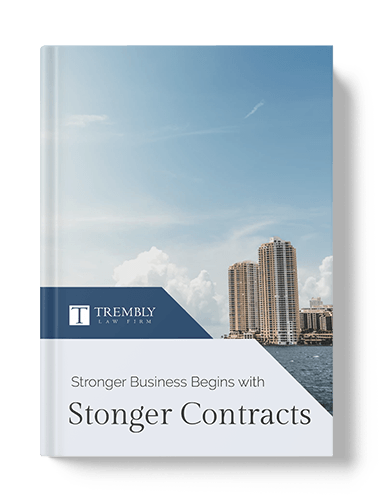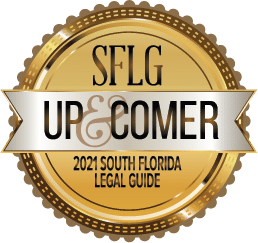(As of 1:30 p.m. on March 16, 2020)
Employee Compensation
Under federal law, specifically, the Fair Labor Standards Act (“FLSA”), employers are not required to pay employees who are not working, absent certain exceptions for exempt employees.[2] Various other factors, such as state and municipal laws, employment contracts, collective bargaining agreements, and/or company policies and procedures, however, may require payment.
Paid Time Off or Sick Leave
The FLSA does not regulate the accumulation and use of vacation and leave. However, like with compensation, exceptions may exist for certain exempt employees. Additionally, various other factors, such as state and municipal laws, employment contracts, collective bargaining agreements, and/or company policies and procedures, however, may require paid leave. If leave is available an employee may use it if he/she has COVID-19 or is otherwise unable to work because of the virus. How the leave is used is generally determined by the employer’s specific policies and procedures.
Furlough or Layoff – Which is the best option?
The short answer is, it depends.
First, let’s clarify what a furlough really is. Furloughs involve reducing the days or weeks that an employee may work due to the special needs of a company. Generally, employers may furlough non-exempt employees without pay without facing potential exposure to liability. Exempt employees, however, require a case-by-case analysis to ensure compliance with applicable federal and state laws, such as the wage and hour provisions of the FLSA. Furloughed employees may not be paid; however, if a non-exempt employee performs any work (whether at the office or from home) the employer must pay compensation for the specific time worked. This includes checking email and voicemail. Failure to do so may jeopardize the employee’s exempt status. In the case of an exempt and/or salaried employee that is furloughed, the employer must pay the employee’s entire weekly salary if that employee does any work-related tasks. Therefore, it is recommended that employers inform and educate employees that they cannot work during the furlough, unless they obtain prior written authorization from the employer.
A layoff can be the temporary or permanent suspension of an employee’s employment for business reasons. Layoffs present another alternative for employers; however, employers must be cognizant of various notice requirements at the state and federal levels, such as the federal and state WARN Acts. As explained in greater detail below, these requirements may be triggered depending on the size of an employer’s workforce and number of laid off employees.
What About Medical Leave?
Under the Family Medical Leave Act (“FMLA”), qualifying employees are entitled to take up to 12 weeks of medical leave for qualified medical and family reasons. Employees, however, must meet certain factors to qualify for FMLA leave and the law does not require employers to pay employees during this period.
Potential Wage and Hour Issues
The FLSA identifies a number of exceptions to its minimum wage and overtime compensation provisions. Several of these provisions, such as the “white collar exemptions,” require exempt employees to be paid a minimum salary to qualify for the exemption. Therefore, it is important for an employer considering whether to reduce hours or furlough employees to understand certain requirements under the law. For example, under federal law and in some states, employers must pay exempt employees the same minimum salary for each pay period. Therefore, if an employee performs any work (whether at the office or from home) the employer must pay compensation. As noted above, failure to do so may jeopardize the employee’s exempt status.
Of course, employers also need to consider other factors, including employment contracts, collective bargaining agreements, and/or company policies and procedures
Layoffs and WARN Act Implications
The federal WARN Act imposes a notice obligation on covered employers (those with 100 or more full-time employees) who implement a “plant closing” or “mass layoff” in certain situations, even when they are forced to do so for economic reasons. It is important to keep in mind that these quoted terms are defined extensively under WARN’s regulations, and that they are not intended to cover every single layoff or plant closing.
Under the federal law, employers are required to provide 60 days’ advance notice to covered employees, unions, and government officials prior to a plant closing or mass layoff at a single site of employment. State WARN laws contain separate and distinct requirements from Fed WARN that create liability for employers. Not all layoffs, however, trigger these requirements and certain exceptions may apply. For example, temporary layoffs of less than 6 months are not considered to be employment losses under the federal law. The size of the layoff is also an important factor. The federal law is triggered when there are 50 employment losses at a single site of employment in a 90-day period. State laws may be triggered at lower levels.
Are You Eligible For Unemployment Benefits
The eligibility requirements and distribution of unemployment benefits varies from state to state. Therefore, it is advisable that employers and employees review the requirements in order to determine eligibility and structure a program that is acceptable to the state. Most recently, the US Department of Labor announced guidelines for states that provide them with more flexibility when making determinations concerning eligibility requirements for unemployment insurance. For example, states may pay:
- benefits if an employer temporarily closes due to COVID-19;
- benefits if a person is quarantined and is expected to return to work after the quarantine is over;
- benefits if an individual who leaves employment due to risk of exposure or infection or in the event that they need to care for a family member; and
Additionally, the federal law states that a person does not need to quit their job in order to receive benefits due to the impact of COVID-19.
Update on Paid Leave and The Emergency Families First Coronavirus Act (H.R. 6201)
On March 14, 2020, the U.S. House of Representatives passed The Emergency Families First Coronavirus Act (H.R. 6201), which aims to introduce new employee sick leave benefits and extend those already in place. At this time, the U.S. Senate is expected to vote on the bill and either approve it, as drafted, amend it, or reject it. The bill appears to have bipartisan support and may likely pass, albeit in an amended form in the near future. Summarized below are various points of interest for employers.
Employers Affected by the Bill
The bill addresses numerous issues, but this guide focuses only on: the Emergency Family and Medical Leave Expansion Act (“Emergency FMLA”) and the Emergency Paid Sick Leave Act. Both Acts would apply to employers with fewer than 500 employees, subject to certain exceptions for qualifying “small employers.”
Emergency Family and Medical Leave Act
- Shorter Qualification Period
- The emergency FMLA provisions would apply to employees who have been employed for 30 calendar days.
- Expanded Benefits
- Covered employers (those with less than 500 employees) will have to allow 12 weeks of FMLA for use by qualifying employees.
- The first two weeks can be unpaid.
- The remaining time (10 weeks) must be paid at 2/3 the employee’s regular rate.
- Triggering Events
- Leave under this Bill can be used when the employee needs leave due to a public emergency with respect to the Coronavirus/COVID-19 for one of the following reasons:
- To comply with a recommendation or order by a health authority or a health care provider that employee’s attendance at work would jeopardize the health of others because of the (a) exposure of the employee to coronavirus, or (b) exhibition of symptoms of Coronavirus/COVID-19 by the employee, and the employee is unable to both perform the functions of the job and comply with the recommendation/order;
- To care for a family member of a qualifying employee, where a health authority or a health care provider makes a determination that the presence of the family member in the community would jeopardize the health of others in the community because of the (a) exposure of the family member to Coronavirus/COVID-19 or (b) exhibition of symptoms of Coronavirus/COVID-19 by the family member; and/or
- To care for a child of the employee who is under 18 years old if the elementary or secondary school or place of care has been closed, or the childcare provider of the child is unavailable, due to a public health emergency.
- Leave under this Bill can be used when the employee needs leave due to a public emergency with respect to the Coronavirus/COVID-19 for one of the following reasons:
Emergency Paid Sick Leave Act
- Covered employers (those with less than 500 employees) will also be required to immediately provide employees with up to 80 hours of paid sick leave.
- Paid sick leave will be required under the following circumstances:
- a) To self-isolate because the employee is diagnosed with Coronavirus/COVID-19;
- b) To obtain a medical diagnosis or care if such employee is experiencing the symptoms of Coronavirus/COVID-19;
- c) To comply with a recommendation or order by a public official with jurisdiction or a health care provider on the basis that the physical presence of the employee on the job would jeopardize the health of others because of:
- the exposure of the employee to Coronavirus/COVID-19; or
- exhibition of symptoms of Coronavirus/COVID-19 by the employee.
- d) To care for or assist a family member of the employee:
- who: 1) is self-isolating because such family member has been diagnosed with coronavirus; or 2) is experiencing symptoms of coronavirus and needs to obtain medical diagnosis or care.
- with respect to whom a public official with jurisdiction or a health care provider makes a determination that the presence of the family member in the community would jeopardize the health of other individuals in the community because of: 1) the exposure of such family member to the coronavirus; or 2) exhibition of symptoms of coronavirus by such family member.
- e) To care for the child of such employee if the school or place of care has been closed, or the child care provider of such child is unavailable, due to coronavirus.
- Compensation
- Paid sick leave must be provided at an employee’s regular rate of pay, unless it is taken pursuant to subsection d. or e.
- Under subsection d. or e. paid sick leave may be paid at 2/3 of an employee’s regular rate.
- Paid sick leave does not carry over from year to year, and these requirements of the bill expire on December 31, 2020
- Exceptions
- The Secretary of Labor has the authority to issue regulations to (a) exclude certain health care providers and emergency responders from the list of those employees eligible for leave; and (b) to exempt small businesses with fewer than 50 employees where the imposition of these requirements would jeopardize the viability of the business as a going concern.
- The protected FMLA leave, does not apply to employers with fewer than 25 employees, if the employee’s position does not exist after FMLA leave due to an economic downturn or other operating conditions that affect employment caused by a public health emergency during the period of leave, subject to certain conditions.
- Compensation
Caution
- The proposed leave is protected. Therefore, an employer must return the employee to the same or equivalent position upon their return to work.
- The paid sick leave must be provided in addition to whatever the employer already provides.
- The bill includes anti-retaliation protections, and remedies consistent with Fair Labor Standards Act penalties for failure to pay minimum wages.
Employer Tax Credits for Emergency Family and Medical Leave and Paid Sick Leave
- Under the bill, employers are responsible for paying the emergency benefits. The government, however, will offer employers refundable tax credits, as follows:
- Employers:
- 100% of qualified family leave wages required to be paid by the Emergency Family and Medical Leave Expansion Act that are paid by an employer for each calendar quarter.
- The amount of qualified family leave wages taken into account for each employee is capped at $200 per day and $10,000 for all calendar quarters.
- 100% of qualified family leave wages required to be paid by the Emergency Family and Medical Leave Expansion Act that are paid by an employer for each calendar quarter.
- 100% of qualified paid sick leave wages required to be paid by the bill that are paid by an employer for each calendar quarter.
- Employers:
- Self-employed individuals:
- 100% of a qualified family leave equivalent amount for eligible self-employed individuals.
- The credit is allowed against income taxes and is refundable.
- Eligible self-employed individuals are individuals who would be entitled to receive paid leave pursuant to the Emergency Family and Medical Leave Expansion Act if the individual was the employee of an employer (i.e., not self-employed).
- The qualified family leave equivalent amount is capped at the lesser $200 per day or the average daily self-employment income for the taxable year per day.
- 100% of a qualified sick leave equivalent amount for eligible self-employed individuals who must self-isolate, obtain a diagnosis, or comply with a self-isolation recommendation with respect to coronavirus. For eligible self-employed individuals caring for a family member or for a child whose school or place of care has been closed due to coronavirus, the section provides a refundable tax credit equal to 67% of a qualified sick leave equivalent amount.
[1] Labor and employment laws are rapidly changing, so please contact your attorney to review your specific situation. This article is not intended as legal advice.

















